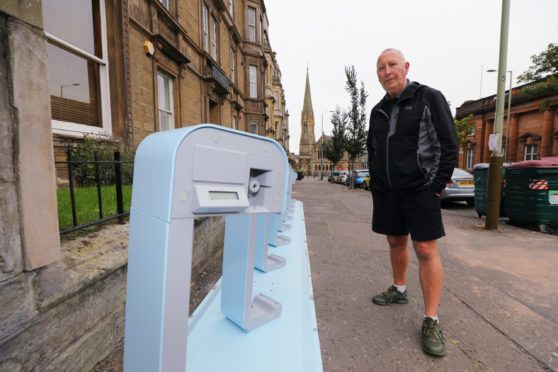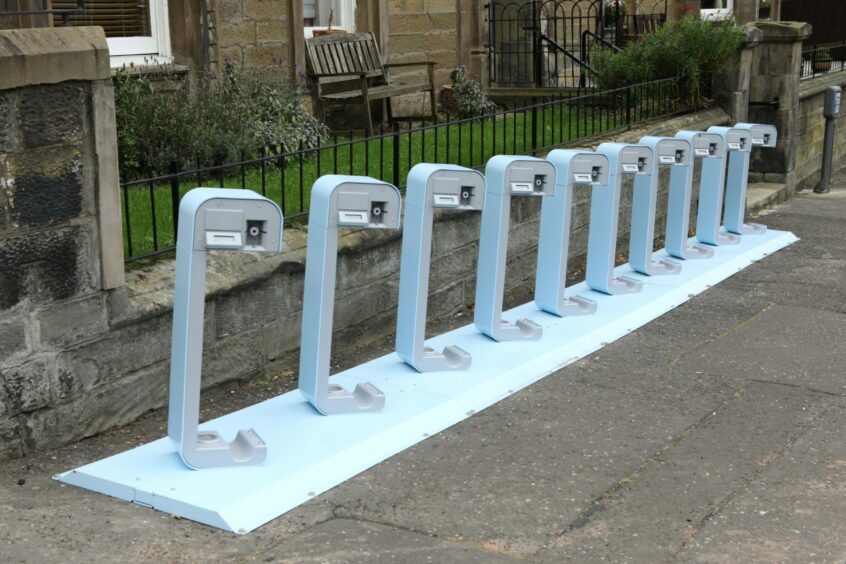Residents in a Dundee conservation area have successfully brought a legal challenge against a decision to site an electric bike stance at a traditional tenement.
The plan to situate the e-bike docking station in Blackness Avenue originally provoked a clutch of objections but the city council gave it the go-ahead last year.
The Embark Dundee scheme – funded by urban mobility firm Ride On – was for hundreds of e-bikes with charging stations at major visitor attractions, larger workplaces, the city centre, Dundee train station and Dundee University.
Defiant David Mulligan, 63, set up a GoFundMe page to fund a court challenge against the rack on Blackness Avenue.
A legal action was brought by Westend Residents CIC, a community interest company set up to represent the interests of residents in Dundee’s West End suburbs conservation area, to challenge the decision at the Court of Session in Edinburgh.
A judge has concluded there was a procedural failure in the planning process.
Five objections against bike stance
The court heard the Blackness Avenue site was part of the wider electric bike scheme for Dundee.
A number of other applications were granted in the city but only one other was next to residential properties and it was withdrawn after residents objected.
Five objections to the Blackness Avenue site were received, raising issues such as adverse effect on a listed building, street scene and conservations area, poor design and privacy and safety impact.
A council officer carried out an assessment and a senior manager in the local authority planning team approved planning permission.
The residents’ group argued there were serious errors in the process.
It maintained the application should have been accompanied by a design statement – mandatory in the circumstances, although exceptions exist which include seeking permission for engineering operations.
The reasons for rejection
Lord Weir said unless the planning officer determined at the time the installation of the docking terminal constituted an engineering operation, a design statement was necessary.
The judge said it did not appear any such judgement was exercised and added: “That constituted a procedural failure in the planning process.”
He said a design statement was “a communication tool” which enabled the community to understand the design rationale of a proposal and ultimately to participate in the planning process.
Lord Weir said: “It is impossible to know what the outcome of the process of public notification would have been had a design statement accompanied the application for planning permission in this case.
“One certainly cannot assume that the same five objectors, or only those five objectors, would have come forward with the same objections.”
He pointed out if there had been one more objection, the matter would have been considered by a council committee.
The judge rejected a submission on behalf of the council the residents’ organisation could show no substantial prejudice arising from the procedural error.

